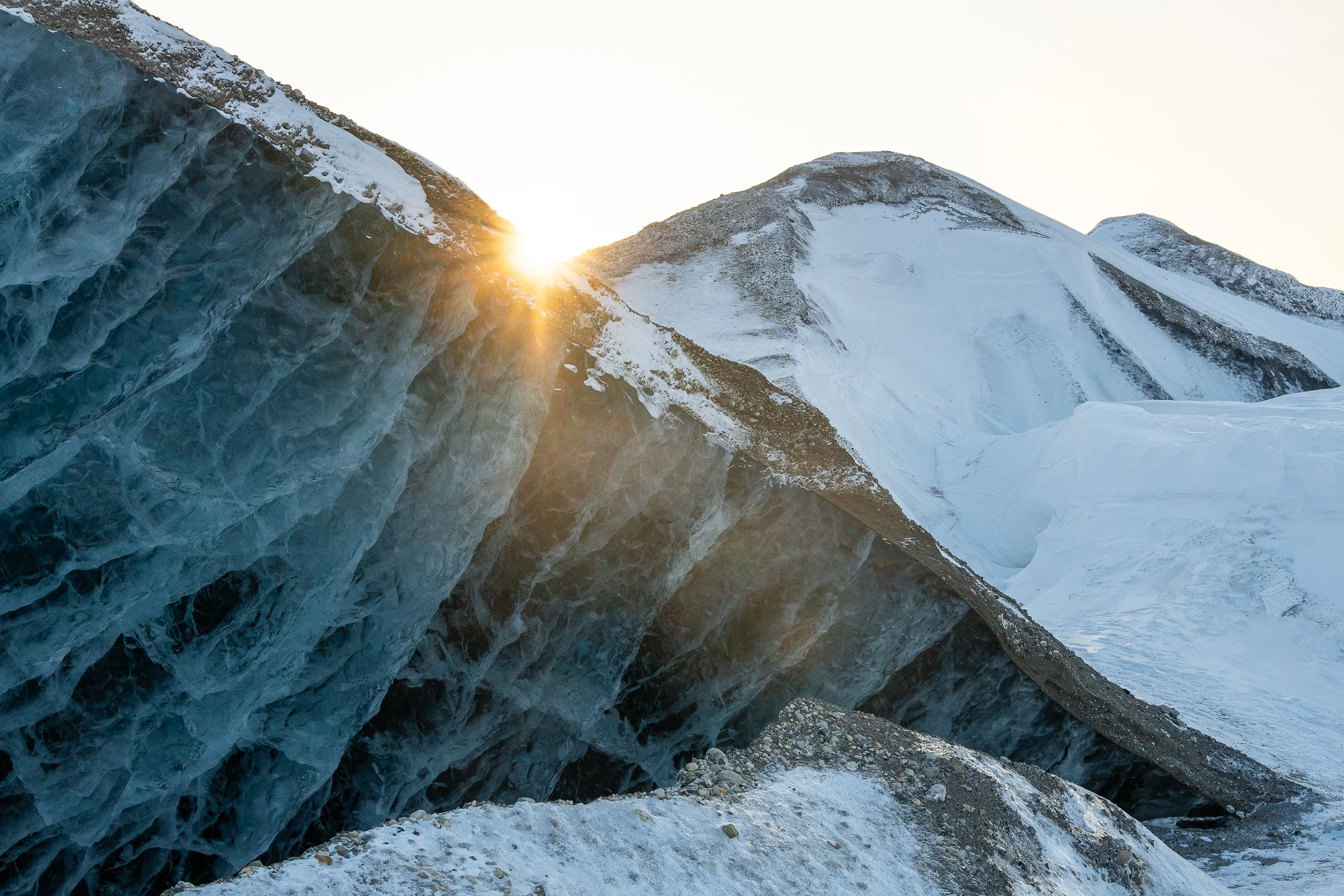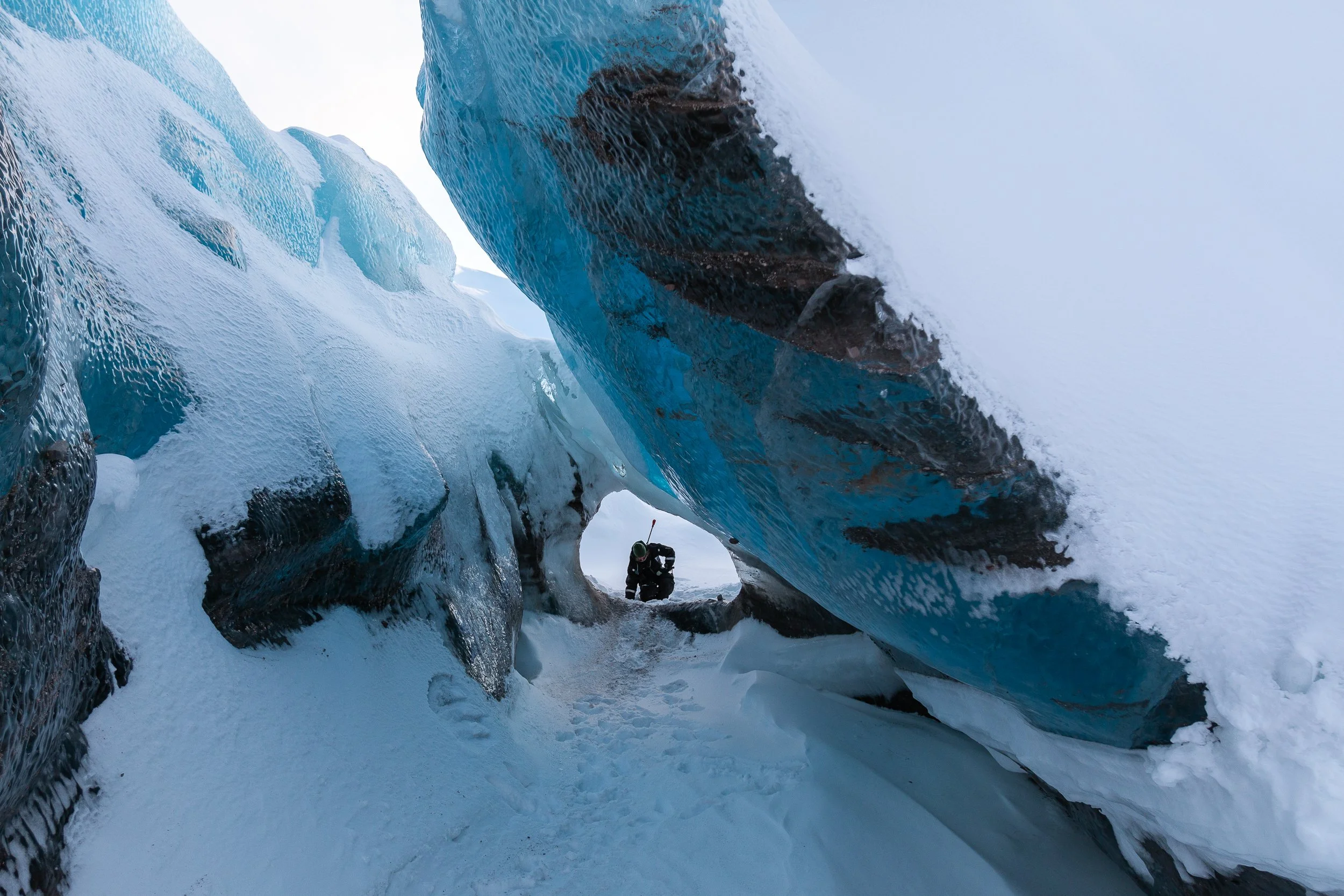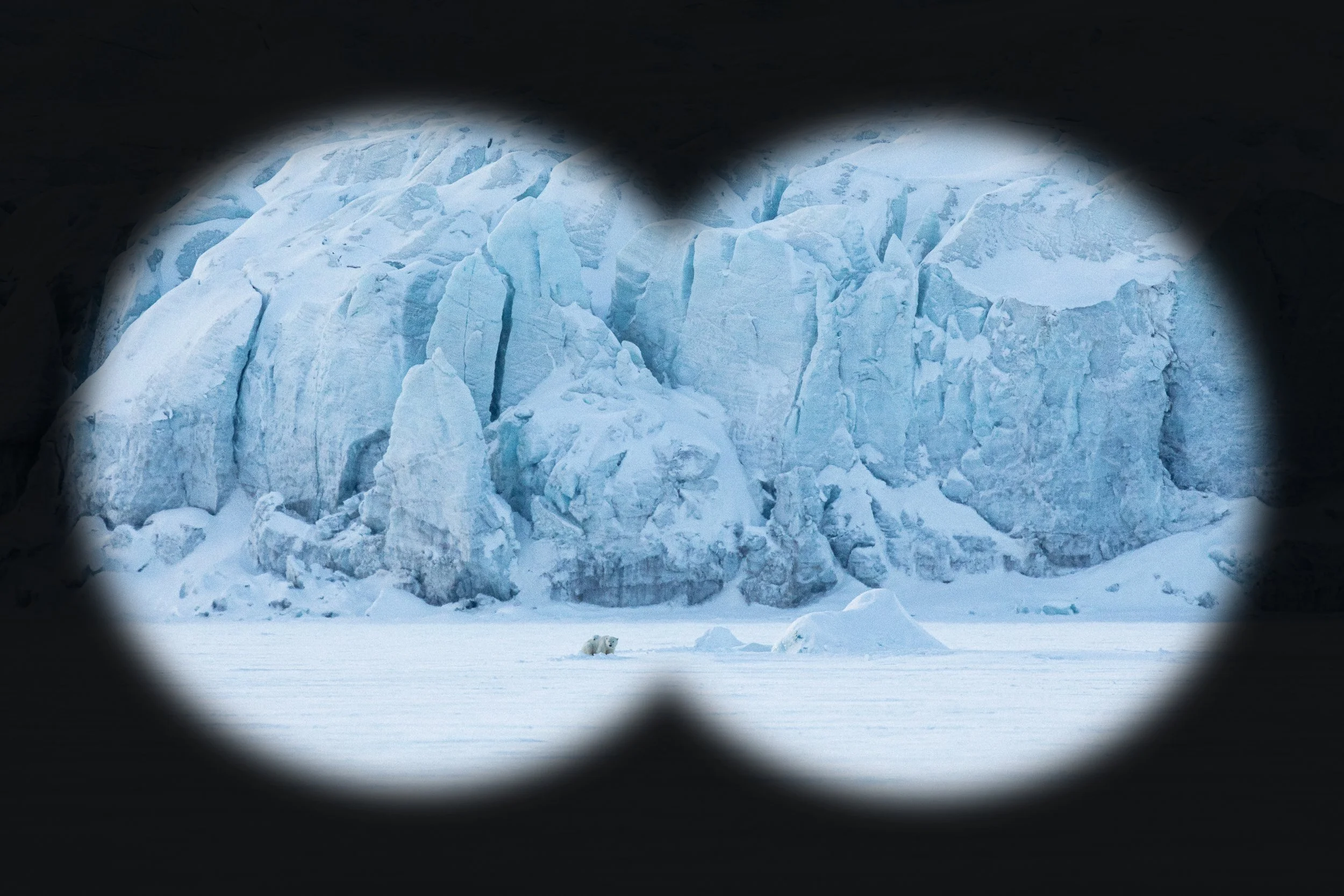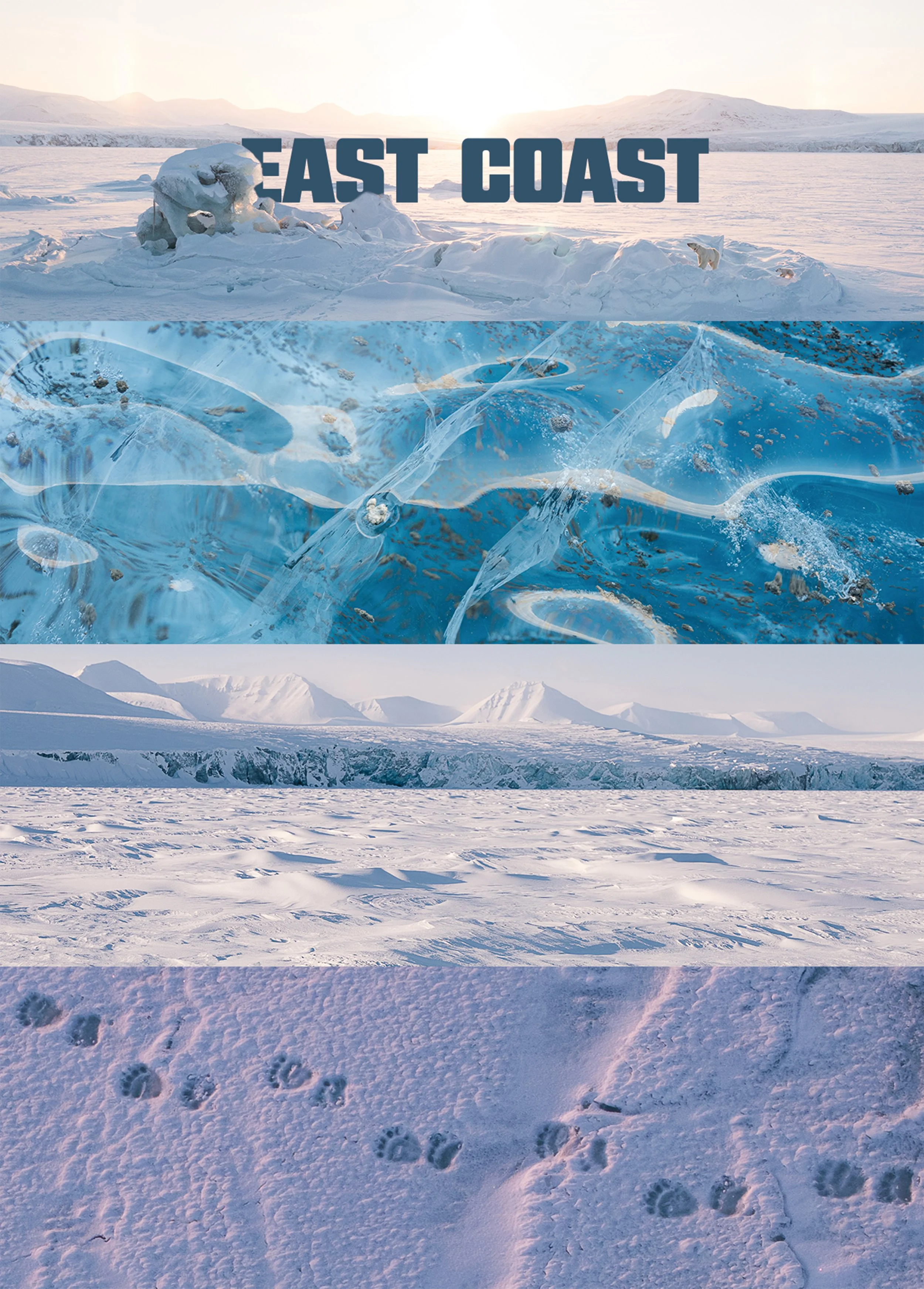
The East Coast
The East Coast is the ultimate trip, where we connect the two worlds that divide Svalbard: the Atlantic and the Arctic. From open water to a frozen sea, from modest glaciers to giants of blue ice, from the comfort of town to the unpredictable raw nature.
The day starts in Longyearbyen. It’s a cold morning in late winter. The sunlight finally reaches this latitude, and everyone and everything are affected by this. Our spirits start to feel warmer in what is paradoxically the coldest period of the year. It’s finally the time to return to the East Coast.
We start our trip on snow scooters, which will take us to cross the 75 Km that separate Longyearbyen from Mohnbukta in the East Coast, a frozen bay where several glaciers create a spectacular common front.
After driving through Adventdalen and Sassendalen, we finally reach the “infamous” moraine of Rabotbreen. This is a huge field of sediments that the glaciers carved from the surrounding mountains. It is often the most challenging part of our trip, as these materials create a labyrinth that we need to traverse.
But the moraine is not only made of rocks and mud. These materials are often glued by glacier ice concealed beneath the surface. The enormous pressure from the glaciers results in a push up of this ice in some points, exposing treasures like this blue ice wall. Having overcome the moraine, we start our ascent into the ice field, the last stretch to cover before reaching our destination.
Driving through the glaciers, we feel the closest we might ever experience to being astronauts. Everything around is ice and snow, and only the sun angle decides the dominant colour of such a powerful scene. We drive in a daze for a while, and then, a blue wall emerges on the far horizon. Mohnbukta’s marvelous glacier wall welcomes us to the East Coast.
A wall of glacier ice up to 60 meters high dwarfs us. Mohnbukta is indeed a bay where 3 glacier fronts calve ice, mainly during the summers. These are the well known icebergs that drift away in the sea, posing a danger to navigation.
In late autumn, the whole bay starts to freeze. What was an open bay gets completely covered by sea-ice. This is what we call fast-ice, attached to land. In the image, we can see the limit between two glaciers that converge in the front, as a black stack of sediments. The glacier icebergs that drift away during the summer are now incorporated into the frozen matrix of sea ice. For months, the frozen bay catches snowfall and gets battered by the wind, resulting in the landscape that we visit now.
The icebergs stuck into the sea-ice act as a great wall for catching snow. This is of especial interest for ringed seals, as they not only keep breathing holes through the sea-ice, but also conceal these holes beneath the snow and build snow lairs where to keep their newborns in April. This is an essential feature of frozen glacier bays for polar bears during spring.
Polar bears patrol glacier bays and nearby areas where drifting icebergs accumulate and freeze, for these represent good hunting grounds for them. They may also use the icebergs as hides, and icebergs’ snowdrift accumulation as snowbeds where to rest between hunts. This means that a polar bear could be among us in an iceberg field, with us not having a chance to find it.
The rear foot of a polar bear compared to my EU 47 size. This track probably belongs to a mid-sized polar bear. Tracks like this could be hours old if there has been a bit of wind blurring the texture of the track, or days old if there has not been any wind but the snow crystals sinter due to the sun's effect. This makes it quite difficult to guess the age of the track with no further information.
The only way to find a polar bear… is to have luck and to spend time scouting with binoculars. Polar bears are masters of stealth, but the vast scale of the landscape makes it possible to spot them several kilometers away.
After some time scouting the bay, we manage to find some movement emerging from inside and iceberg chunk. A polar bear female with a cub of the year. The female-cub pairs benefit from the bay's more secluded environment. They recently emerged from the den in the mountains and mum has invested a lot of energy in a several-month fasting and milking period. They need to hunt seals quickly, without traveling too far or exposing the cub to the more challenging drift ice outside the bay in the open sea.
Mum and cub travel from iceberg to iceberg in search of seals. For the next months, the cub will learn everything by mimicking and playing, the second sometimes being a challenge for the mum to hunt. The diet for the cub will be a mix of fat-rich milk with seal (also fat-rich). Observing this behavior is a unique opportunity in a habitat that quickly vanishes. Svalbard has lost 40% of its fast-ice around the archipelago since the 80’s. Our trip to the East Coast is far more than just a fun trip. It is an experience that resonates in every one of us, as we witness one of the most pristine ecosystems on earth unfolding in front of us, both in subtle and raw, powerful ways.
Experience this for yourself!













